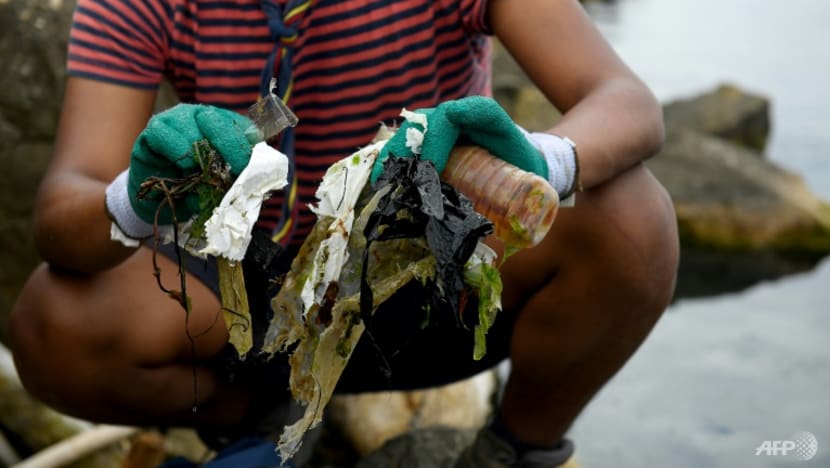Grasslands park home to unique fossil find
Category: Local News
Published: Wednesday, 01 December 2021
Written by Tara Garcia

Photo courtesy of Dr. Emily Bamforth
An exciting fossil find recently took place in southwest Saskatchewan.
Dr. Emily Bamforth, Curatorial Assistant with the Royal Saskatchewan Museum provides details on the specimen found in Grasslands National Park.
"What we found was a big marine reptile called a mosasaur. A mosasaur is a little bit like a swimming komodo dragon, the closest living relative is snakes and lizards."
Dr. Bamforth adds that this particular mosasaur found in Grasslands National Park is called a prognathodon and was large with an estimated body length of 11 meters.
Often called the t-rex of the sea, a few have been found in Alberta however, this is the largest and first prognathodon ever found in Saskatchewan.
The Royal Saskatchewan Museum has a partnership with Grasslands National Park and they do a lot of work primarily out of the east block of the park and occasionally in the west block which Dr. Bamforth says has older rocks, roughly 10 million years older than those in the east. The west block is mainly where marine animals are found.
Dr. Bamforth says that the site they were working on was actually discovered by the land over before the park acquired it. The owner found the fossils on the surface and contacted the Royal Saskatchewan Museum back in 2012. What they found was the tip of an animal's snout which had huge teeth, roughly 4cm in diameter. At the time they could only surface collect as they did not have a permit to excavate. All they could collect was the tip of the upper and lower jaw and some vertebrae on the surface.
Almost 10 years passed, until last year when Dr. Bamforth applied for a collection permit from the National Park to do a site check. Within 20 minutes of being at the site, they uncovered the better part of the snout, the upper jaw, and other parts of the skull.
Dr. Bamforth provides details on the importance of this find.
"A lot of what we find here is endemic to Saskatchewan. That is, it's found in Saskatchewan but nowhere else. And so we think there was something unique about where the sea was in Saskatchewan that was supporting this unique group of animals. So every new species that we find is contributing to our understanding of that."
In addition, Dr. Bamforth adds that they believe there is more of the specimen out in the field. They actually came upon it at the end of their field season and only had two days to collect what they could. The team buried well the material left in the ground and have plans to go back next summer to the site and continue to excavate.
Once they have all of the specimen collected it will likely go on display at the Royal Saskatchewan Museum

Photo courtesy of Dr. Emily Bamforth
An exciting fossil find recently took place in southwest Saskatchewan.
Dr. Emily Bamforth, Curatorial Assistant with the Royal Saskatchewan Museum provides details on the specimen found in Grasslands National Park.
"What we found was a big marine reptile called a mosasaur. A mosasaur is a little bit like a swimming komodo dragon, the closest living relative is snakes and lizards."
Dr. Bamforth adds that this particular mosasaur found in Grasslands National Park is called a prognathodon and was large with an estimated body length of 11 meters.
Often called the t-rex of the sea, a few have been found in Alberta however, this is the largest and first prognathodon ever found in Saskatchewan.
The Royal Saskatchewan Museum has a partnership with Grasslands National Park and they do a lot of work primarily out of the east block of the park and occasionally in the west block which Dr. Bamforth says has older rocks, roughly 10 million years older than those in the east. The west block is mainly where marine animals are found.
Dr. Bamforth says that the site they were working on was actually discovered by the land over before the park acquired it. The owner found the fossils on the surface and contacted the Royal Saskatchewan Museum back in 2012. What they found was the tip of an animal's snout which had huge teeth, roughly 4cm in diameter. At the time they could only surface collect as they did not have a permit to excavate. All they could collect was the tip of the upper and lower jaw and some vertebrae on the surface.
Almost 10 years passed, until last year when Dr. Bamforth applied for a collection permit from the National Park to do a site check. Within 20 minutes of being at the site, they uncovered the better part of the snout, the upper jaw, and other parts of the skull.
Dr. Bamforth provides details on the importance of this find.
"A lot of what we find here is endemic to Saskatchewan. That is, it's found in Saskatchewan but nowhere else. And so we think there was something unique about where the sea was in Saskatchewan that was supporting this unique group of animals. So every new species that we find is contributing to our understanding of that."
In addition, Dr. Bamforth adds that they believe there is more of the specimen out in the field. They actually came upon it at the end of their field season and only had two days to collect what they could. The team buried well the material left in the ground and have plans to go back next summer to the site and continue to excavate.
Once they have all of the specimen collected it will likely go on display at the Royal Saskatchewan Museum










